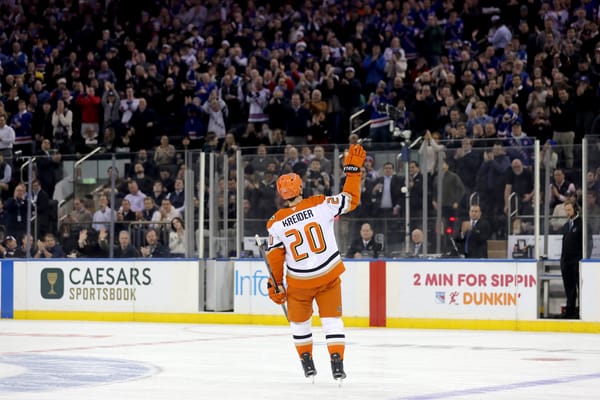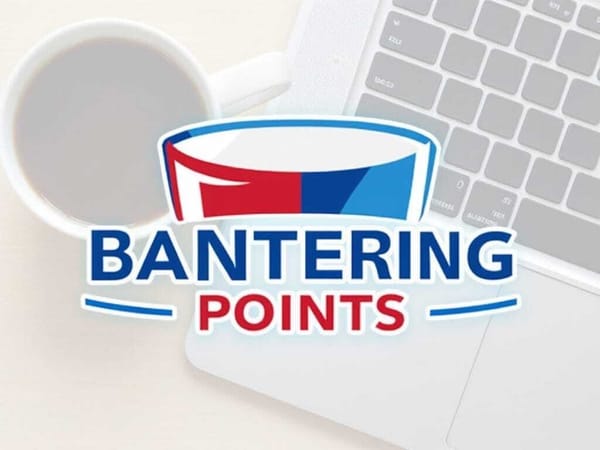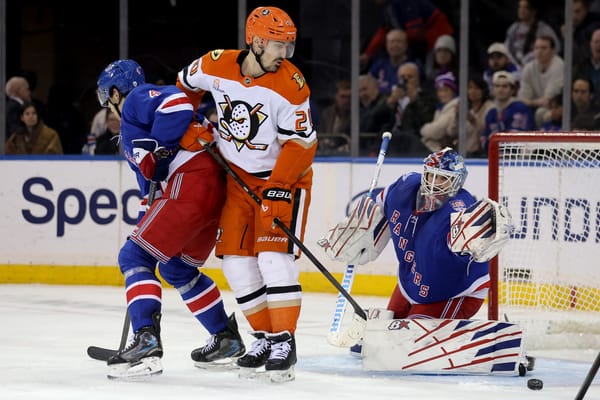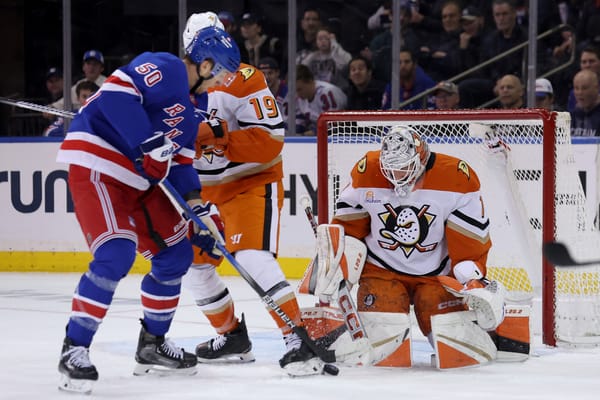2017 NHL Draft Grades: New York Rangers
The past two years I’ve taken the day after the draft to come up with my person draft day grades for the New York Rangers. In case you want to see how this has worked in the past, here’s what my past two were:
Last year I loved Sean Day, Tarmo Reunanen, and Ty Ronning. Day and Ronning both exceeded expectations last year, and Reunanen always was going to need a little time to develop, so I’m giving myself a great grade here.
I liked Tim Gettinger and Tyler Wall. I did very well here, too.
I did not like Gabriel Fontaine. Still think it was an overage reach, and still don’t see a path to the NHL for him. So yeah, I’m giving myself a passing grade.
What I’m trying to tell you if that I am a genius and you should take these grades to the bank.
As a reminder: These grades take into account a few things: Where the Rangers were selecting, who they actually selected, who was left on the board, assumed value/risk, and whatever else I feel plays a role in the selection.
Selecting Lias Andersson in the 1st Round (7th overall) (Coverage here) (Bonus coverage here)
Grade: A-
Analysis: The New York Rangers had a top-10 pick for the first time since selecting Dylan McIlrath in 2010, and a first round pick for the first time since they selected Brady Skjei in 2012.
There was an enormous expectation for the Rangers to make a mind-blowing pick here, especially considering what it cost to get this selection in the first place. What the Rangers did was play the fairway, rather than trying to drive the green. (For non-golfers, the Rangers played it safe.)
Here’s a little background on why this particular move wasn’t as foolish as some people seemed to think it was (from our bonus coverage):
Now, it’s not the biggest deal in the world to reach a few picks for a guy you really like. But in a draft where it seemed like moving down was preferable to moving up, and with the Rangers being devoid of a second and third round pick this year? Yeah, moving from 7th to 14th or 15th in order to earn an extra second round pick might have been smarter.
Right after his selection, however, it was rumored the Los Angeles Kings (sitting at 11) were hot and heavy for Andersson, and the Rangers obviously weren’t sure they’d be able to fall back and still have him around, so they grabbed him at 7th.
I can tell you with relative certainty that the first round played out in a way that led to this move. The Rangers were very interested in Elias Pettersson, but he was taken 6th by Vancouver. Cale Makar was one of their highest rated defenseman and he was taken 4th overall. When your top of the card players are being selected, it changes the strategy a little.
Andersson is one of the few players in this draft with a plethora of professional experience. Unlike these other kids being selected out of juniors, Andersson has played two years in the SHL as a teenager. He’s slated to play for Frölunda next year (yes, that’s where Henrik Lundqvist came from) which is one of the best developmental spots in the world.
Were there players with potentially more upside on the board when the Rangers selected? Yes, and there’s really no debating it. However, Andersson is considered to be a “sure thing” in terms of being a top-six player in the NHL. As some scouts put it: He’s not going to be the best player on your team, but he can be a top-line guy.
Also, Andersson had an explosive second half of the year in the SHL. There’s plenty of evidence to suggest he was a late bloomer, and his early season struggles (again, in the second best men’s hockey league in the world as a teenager) saw him fall a few notches. He has a ton of international experience for Sweden, and has next year to continue to hone his skills before making the jump to the NHL.
Although it is worth noting that some scouts believe he could make a push for a longer stay in camp this year — which I think is saying something.
Alex Nunn’s scouting report:
18-year old Andersson is one of 2017’s safer draft picks, right on the border of being NHL-ready. As a top-six pivot with offensive and defensive responsibilities for HV71 this season, Andersson showcased his quality at both ends of the ice en-route to a national championship. He’s a strong skater with soft hands, excellent IQ, and an endless motor who likes to keep it simple. Andersson is the kind of guy a coach can lean on to score key goals, win faceoffs, kill penalties, and take tough assignments. He hounds the puck relentlessly and uses his deft touch to finish chances around the net. Not a high-upside guy capable of dazzling crowds, but a tremendous team player that fans are going to adore.
Selecting Filip Chytil in the 1st Round (21st overall) (Coverage here) (Bonus coverage here)
Grade: A
Analysis: If the Rangers went safe with the 7th overall selection, they made a really smart gamble at 21 -- even if there were safer picks on the board.
The first thing to know about Chytil is that he won’t be 18 until September. That should impress the hell out of you when you realize he played in the Czech professional hockey league this year, notching 8 points in 38 games on a bad team. In their fight to avoid relegation (which they did) he went 1-1-2 in the two playoff games.
Internationally his numbers are even more impressive; sporting a 6-7-13 scoreline in 19 U18 games for Czech as a 17-year-old. In the U18 WJC he had five points in as many games and centered Czech’s top line. For The Czech U18 in the Hlinka Memorial he had a 2-1-3 scoreline in four games.
From our bonus coverage, here’s some of his younger stats against a higher age group:
As a 15-year-old: Chytil recorded 30 goals and 18 assists for 48 points in 25 HC Zlin U16 games. He was so dominant that he was moved to the U18 level where he notched nine points in 19 games.
As a 16-year-old: Chytil scored 28 goals and added 22 assists for 50 points in 30 HC Zlin U18 games. That year he also notched seven points in 20 U17 international games.
Was this a risky pick? Yes. His rankings are all over the board from the 28th best prospect by Hockey Prospect, to the 31st best by TSN/McKenzie, to the 11th best EU skater by NHL Central Scouting, to 64th by ISS Hockey, or 70th by Future Considerations.
You might notice the grade is very high, and it’s because the Rangers strategy in the first round was brilliant. They went safe with seventh, and took the insane upside at 21. I’m buying into the fact that at 17 Chytil was overlooked by a lot of teams when he shouldn’t have been. And it’s clear the NYR scouted the Czech Republic hard this year.
Michal Sedláček is a Czech-based hockey writer who actually covered HC Zlin (where Chytil plays). He’ll be helping us out in coverage this year, so make sure to give him a follow on twitter. (Full disclosure, English is not his first language so I’ve cleaned up a little of his scouting report.)
Filip Chytil comes from Zlín, a small town in the Czech Republic and the town where Roman Hamrlik was born and played. He made a big step this year, starting to play again men last August in friendly matches. At the time he made that jump he was only 16 years old. He played great at the Hlinka Memorial and played very well in preseason. So the coaches gave him the chance to play in the Czech extralig. He became a fan favorite among fans quickly because of his style of play nice. In my eyes Chytil plays the game a little like Auston Matthews. He is very strong on the puck and is a good skater. Chytil said he often watches Matthews and McDavid. These two players are his idols.
I think if he plays in the Czech league for another year it will be for the best. Because Zlín is not such a good team he’ll likely be a key player and get a chance to continue his development. The coaches will probably give him a lot of time on the ice and play him as the first or second line center. And he's still very young, only turning 18 on September 5th.
About his stats in the Czech league ... These numbers are not so amazing, but he played great. He had a great chances, showed a good skill and created passes for his teammates. This year he made a big and fast jump ahead. I think he has great potential to become a good NHL player.
(It’s worth noting here that his professional team is not a good one, which probably hurts his numbers a little as well. The upside there is he’s not fighting for a key role, since he’ll have a shot to take on a bigger role here.)
Alex Nunn’s scouting report:
Although still a little raw, Czech forward Chytil has everything in his arsenal to be an impact forward at NHL level. He’s smart, high-skilled, and an excellent skater. Chytil carries the puck with confidence, instigating aggressive scoring plays and making quick, precise decisions on-the-fly. He knows when to hold back and when to commit, using his speed and footwork to buy himself more time if necessary. The 17-year old plays a bigger game than his frame would suggest too; Chytil hustles back hard and helps out defensively, never afraid to work for it against bigger players in the defensive zone.
Trading the 102nd selection to San Jose for the 123rd and 174th selections (Coverage here)
Grade: A
Analysis: Devoid of a 2nd or 3rd round pick, and noticing the market for trading up was too hot to handle, Jeff Gorton traded the 102nd pick for two more selections. After the third round, these picks are truly lottery tickets. The best thing you can do is get more of them, especially in the later rounds. No issues here.
Selecting Brandon Crawley in the 4th round (123rd overall) (Coverage here)
Grade: C-
Analysis: Reaching for overage players is fine in the later rounds, but in this draft more than others there were a plethora of players who were free falling. Projected second and third round talent fell all the way to the final names being called, and with the 123rd overall selection the Rangers could have gotten themselves one of those falling names.
Crawley is 20-years-old playing in the OHL, which means I take some of the “loves the physical play” and “really pushed guys off the puck this year” with a grain of salt. At 20, he should be doing that, since he’s playing against teenagers. His defense is something that’s been his calling card, and he had 114 penalty minutes last year, so he’s not afraid to get rough and tough. As much as that can be a red flag to warn of a guy with a temper, he only had 10 penalty minutes in 14 playoff games, so it’s clear he can keep things in check when it matters. (His past three seasons in the OHL have seen massive dropoffs in PIM from regular season to playoffs.)
For what it’s worth, Corey Pronman seemed to have his eye on Crawley:
NYR selects Brandon Crawley. One of my fav sleepers. Older defenseman, but always looked effective when I saw London.
— Corey Pronman (@coreypronman) June 24, 2017
It’s not so much that I mind taking the risk on him, but I do mind when they took the risk on him. There were much better players to take here, and Crawley would have been around deeper in the draft.
Selecting Calle Sjalin in the 5th round (145rd overall) (Coverage here)
Grade: B+
Analysis: Where I thought Crawley was a reach selection, Sjalin was outstanding value at 174th overall.
Akin to Chytil, Sjalin isn’t turning 18 until September, so the fact that he played last year in the third division of Sweden hockey shouldn’t be troublesome to you. He also really impressed on the national levels this year, as seen below by Blueshirt Banter foreign corespondent Alex Nunn:
Calle Själin's a good left-hand defenseman. Always dependable for Sweden at U18 level last season. Contracted to Leksand 2017/18. #NYR
— Alex Nunn (@aj_ranger) June 24, 2017
Agree 100% on this. Själin bailed Westerlund out A LOT at international level. #NYR https://t.co/IG64VdxSjs
— Alex Nunn (@aj_ranger) June 24, 2017
He’s contracted to play in Allsvenskan next year (think of it as the AHL of the SHL), and as a very young 18-year-old the experience is going to be great for him. He was ranked 199th by Hockey Prospect and 163rd by ISS. NHL Central Scouting had him as their 44th best European skater. Despite that, I really like the value here, and like Chytil I think his age played a role in some of those rankings.
Alex Nunn’s scouting report:
Själin is a reliable two-way defenseman. Unspectacular but solid, the 17-year old left-hand shot was a standout blue line option for Sweden during the U18 World Juniors this year, where he propped up partner Filip Westerlund. Själin keeps it simple and doesn’t tend to over complicate things at either end of the ice. He’s a good skater who plays smart and can impact a game in all three zones. Should make the step-up from Division 1 to Allsvenskan next season with Leksand.
Selecting Dominik Lakatos in the 6th round (157th overall) (Coverage here)
Grade: B
Analysis: Lakatos fit the mold of most Rangers picks this year; causing both a “who the hell?” reaction from Rangers fans and him being an older player. The difference? Here the Rangers grabbed an overage who is playing professionally in Europe.
Lakatos -- like Andersson — caught the Rangers’ eyes because of an explosive surge at the end of his season. In 44 games in the Czech League he had 20 points, but then come the playoffs he recorded 13 points in 16 games. At just 20-years-old, his developmental opportunities with men in a pro league seems to have gone a long way with the Rangers.
At this point in the draft, I like the risk. Yes, there were continued falling talents who the Rangers kept passing on, but at the very least they got a guy who has been surging upward and has professional experience.
Also, this fits my rule about overages: you’re going to risk an overage, take a guy who is playing against men rather than someone who is playing against lower age groups.
Here’s a video of all eight of his playoff goals this year, from Alex:
Here are all eight playoff goals by #NYR sixth-round selection Dominik Lakatoš from this past season. Consistent theme. pic.twitter.com/2pNbglGycJ
— Alex Nunn (@aj_ranger) June 25, 2017
Selecting Morgan Barron in the 6th round (174th overall) (Coverage here)
Grade: C-
Analysis: Barron is a Cornell commit who had outstanding pre-college numbers. The problem? He did so in a much lesser league.
For St. Andrew’s College (a prep school) the 18-year-old had 50 points in 46 games. But when the season ended and he played five games in the USHL with Sioux City he recorded no points. Now, that’s not an attack on him — going to a new team let alone a new league can wreak havoc with a player’s groove — but it’s something to keep an eye on. The ECAC has gotten far more competitive in college ranks, and Cornell isn’t the worst place for him to go learn to round out his game.
The good news is that he did dominate the lesser leagues, finishing his CAHS career with 122 points in 104 games.
The reason for the lower grade is because (again) with falling talent he was a bit of a reach. For what it is worth, his overall ranking was a little all over the place. Hockey Prospects had him at 158th overall while Future Considerations had him at 219th. Central Scouting gave him the 98th overall ranking for NA skaters.
Selecting Patrik Virta in the 7th round (207th overall) (Coverage here)
Grade: B-
Analysis: This deep in the draft you take your risks. Virta is 21-years-old, and thus a triple-overage, but he’s playing in a pro circuit and had a breakout year this season.
Like Andersson and Lakaos before him, Virta had a great second half and finished his Liiga season with a 5-1-6 scoreline in six playoff games. His U20 numbers were outstanding in Finland (75 points in 43 games) and he has played the past two years in the top Finnish ranks of Liiga.
Again, far more “sure thing” falling names were available, and the Rangers did grab another overage, but at the very least they took a guy who is an overage in a pro league. There is a very positive growth trend in his numbers (he went from 2-2-4 in 33 games two years ago to 14-12-26 in 49 games last year) and his playoffs were obviously on another level.
I don’t love passing on some of the players the Rangers did, but I see the attraction to Virta.
Alex Nunn’s scouting report:
21-year old Virta plays a fast-paced game, utilizing good wheels and a quick shot to cause problems around the opposition net. He finds open areas well and does not hesitate to get the puck away quickly in and around the slot. Strong on his skates and a solid forechecker, Virta made his breakthrough with Liiga club TPS this past season and should continue to take on more responsibility in 2017/18 as a team-mate of Rangers’ 2016 draft pick Tarmo Reunanen.
There you have it. See you all next year!





